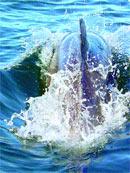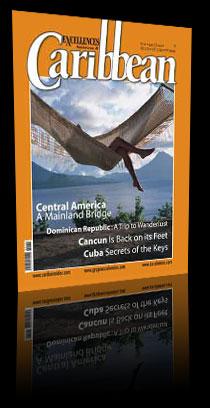A Balmy Sanctuary for Humpbacked Whales
Nearly 28 miles from Puerto Plata, on the northern shoreline of the Dominican Republic, lies the Humpbacked Whales Sanctuary, a marine paradise that every year harbors couples of these mammals that come here to mate and have their offspring.
Thousands of tourists, spectators, biologists and environmentalists flock to these shores between December and March to witness a natural process that has turned out to be one of the major attractions this Caribbean nation has to offer. This region, featuring adequate water temperature for the cetaceans’ reproductive cycle, is simply one of a kind.
Whales are considered endangered species since only 6,000 of them now swim in seas around the world. Half of these humpbacks make it to the waters off the northeastern Dominican Republic, in the areas of Banco de la Plata, Banco de la Navidad and the Samana coastline just to mate and have their sperm whales. Under the wing of Dominican authorities, a safe haven for these humongous marine species has been built and is now run under tough regulations.
The name humpbacked whale stems from the fact that these mammals jump pretty high and flash their twisted and motley tailfins as they submerge in the water. This is indeed a genuine paradise that barely comprises 10 square miles of protected areas within the National Environmental Protection System.
The Samana coasts, trimmed with palmettos and boasting calm bluish-and- greenish waters, give this bay and its surroundings jaw-dropping beauty.
In addition to this healthy recreation promoted by ecotourism, authorities have set up watching sites for tourists to take a closer look at how whales reproduce.
These astounding marine species come around every December on a reproductive quest marked by long whistles that could last as long as half an hour and that fishermen nickname whale singing. Indeed, it’s nothing but a time for males to flirt and conquer. Boats steam their way into the bay for visitors to catch a good glimpse at the show and be within earshot of their singing. Humpbacks dip and jump and frolic, trapped inside the foam of a perfectly clean sea that turns steel-grey under the deep blue sky and the sweltering sun.
In late March we see them off to other seas, some of them as far away as Norway or Greenland. Recent research studies on these mammals have revealed that balmy and calm waters in this particular neck of the woods reach pleasant temps that favor their reproduction.




































































